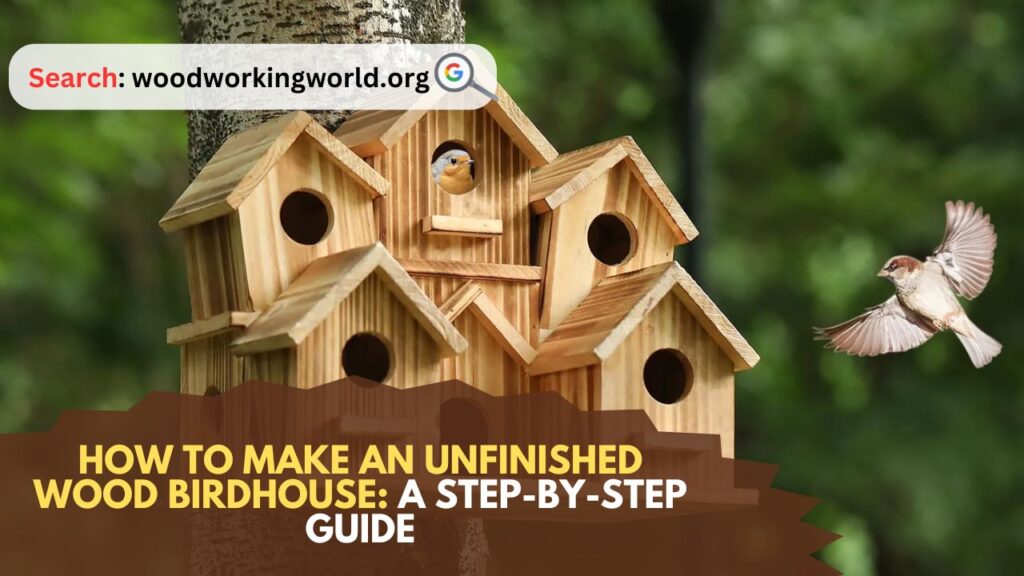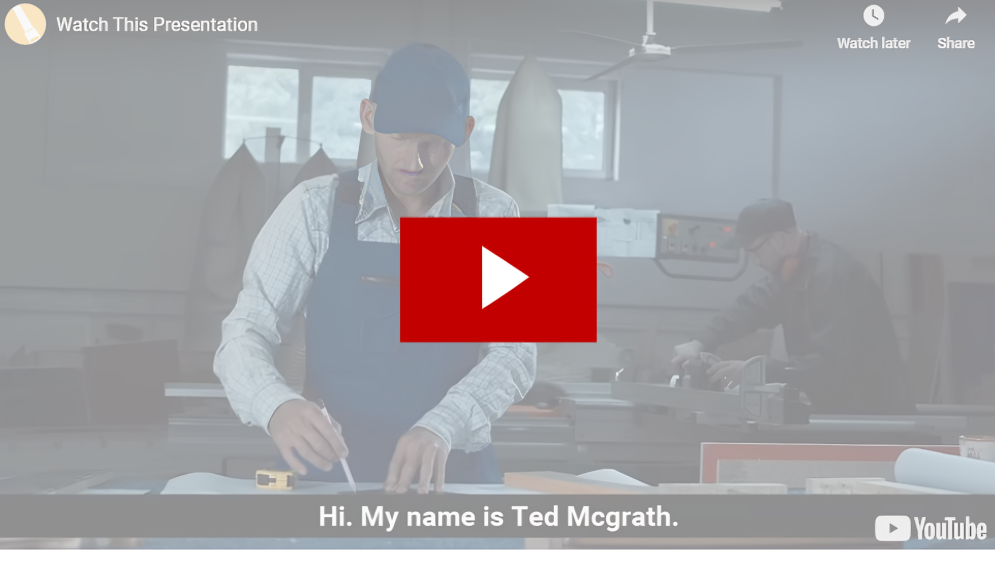Unfinished Wood Birdhouse: Birdhouses are a delightful addition to any garden or yard, providing a safe haven for birds and an enjoyable project for woodworking enthusiasts. Making an unfinished wood birdhouse allows you the creative freedom to decorate it later and ensures a customizable habitat for your feathered friends. This guide will walk you through the process of creating your own unfinished wood birdhouse, from gathering materials to assembly.

How to Make an Unfinished Wood Birdhouse
Materials Needed
Before you begin, gather the following materials:
- Wood: Choose a durable wood like cedar, pine, or redwood. A single plank of 1-inch thick wood, about 6 feet long and 6 inches wide, should suffice.
- Screws or Nails: 1-1.5 inch galvanized screws or nails.
- Wood Glue: For added stability.
- Sandpaper: Medium to fine grit.
- Drill and Drill Bits: For making holes and driving screws.
- Saw: A hand saw or circular saw.
- Measuring Tape and Pencil: For precise measurements.
- Clamps: To hold pieces in place while assembling.
Step 1: Plan and Measure
Start by planning the size and design of your birdhouse. A typical birdhouse for small birds like sparrows or finches should have a base of about 5×5 inches and a height of 8-10 inches. The entrance hole should be approximately 1.5 inches in diameter, placed about 2 inches from the top of the front panel.
Using your measuring tape and pencil, mark the following dimensions on your wood plank:
- Front and Back Panels: Two pieces, each 8 inches high and 5 inches wide.
- Side Panels: Two pieces, each 8 inches high and 5 inches wide.
- Base: One piece, 5 inches by 5 inches.
- Roof Panels: Two pieces, each 6 inches wide. One piece should be 7 inches long, and the other 8 inches long to create an overhang.
Step 2: Cut the Wood
Carefully cut the marked pieces using your saw. Ensure the cuts are straight for a snug fit during assembly. After cutting, sand the edges of each piece to remove splinters and rough spots.
Step 3: Drill the Entrance Hole
Take one of the front panels and mark the spot for the entrance hole, about 2 inches from the top. Using a 1.5-inch drill bit, drill the hole. Sand around the hole to smooth out any rough edges.
Step 4: Assemble the Base and Sides
Begin assembling your birdhouse by attaching the sides to the base. Apply a thin line of wood glue along the edges of the base where the sides will be attached. Position the side panels on the glued edges and use clamps to hold them in place. Reinforce the joints by driving screws or nails through the sides into the base. Repeat this process for the front and back panels, ensuring they are flush with the sides and base.
Step 5: Attach the Roof
To attach the roof, first, apply wood glue along the top edges of the assembled box. Place the shorter roof panel on one side, ensuring it’s flush with the edges. Secure it with screws or nails. Then, overlap the longer roof panel on top of the first, creating a slight overhang to protect the entrance from rain. Secure this panel with screws or nails as well.
Step 6: Finishing Touches
Inspect your birdhouse for any rough edges or protruding nails/screws. Sand down any rough spots and make sure all joints are secure. While the birdhouse is currently unfinished, this step ensures it’s safe for birds to use immediately.
Step 7: Mounting Your Birdhouse
Choose a location for your birdhouse that is safe from predators and provides some shelter from the elements. Ideal spots include trees, posts, or the side of a building. Use screws to mount the birdhouse securely.
Tips for Customization
Once your birdhouse is built, you can leave it unfinished to allow the wood to age naturally, or you can customize it with paint or stain. If you choose to paint, use non-toxic, bird-safe paint. Bright colors can attract birds, but natural colors blend in better with the environment. Avoid painting the interior, as birds prefer natural wood for their nesting area.
Additional Considerations
- Ventilation and Drainage: Ensure your birdhouse has small ventilation holes near the top and drainage holes in the bottom to keep the nest dry and comfortable.
- Cleaning: Consider designing the birdhouse with a removable panel or hinged roof for easy cleaning between nesting seasons.
Common Mistakes to Avoid
- Incorrect Hole Size: Different bird species prefer different hole sizes. Make sure the entrance hole is appropriately sized for the type of birds you want to attract.
- Lack of Protection: Ensure the birdhouse is placed in a location that offers protection from predators and harsh weather.
- Over-Decoration: While it’s tempting to decorate your birdhouse elaborately, excessive decoration can deter birds. Stick to simple designs and natural colors.
Enjoy Your Birdhouse
Building a birdhouse is not only a fun woodworking project but also a way to support local wildlife. By providing a safe place for birds to nest, you’ll enjoy watching them and contributing to their well-being. Plus, you can take pride in a project that enhances your outdoor space.
Conclusion: Unfinished Wood Birdhouse
Creating an unfinished wood birdhouse is a rewarding project that combines craftsmanship with a love for nature. With basic tools and materials, you can build a birdhouse that provides a safe haven for birds and a source of enjoyment for you. Follow this guide step-by-step, and you’ll have a birdhouse that’s ready to be decorated or left to weather naturally, offering charm and function to your yard. Happy building!
I hope this article on Unfinished Wood Birdhouse has been helpful. If you have any further questions, please feel free to leave a comment below.
Video
